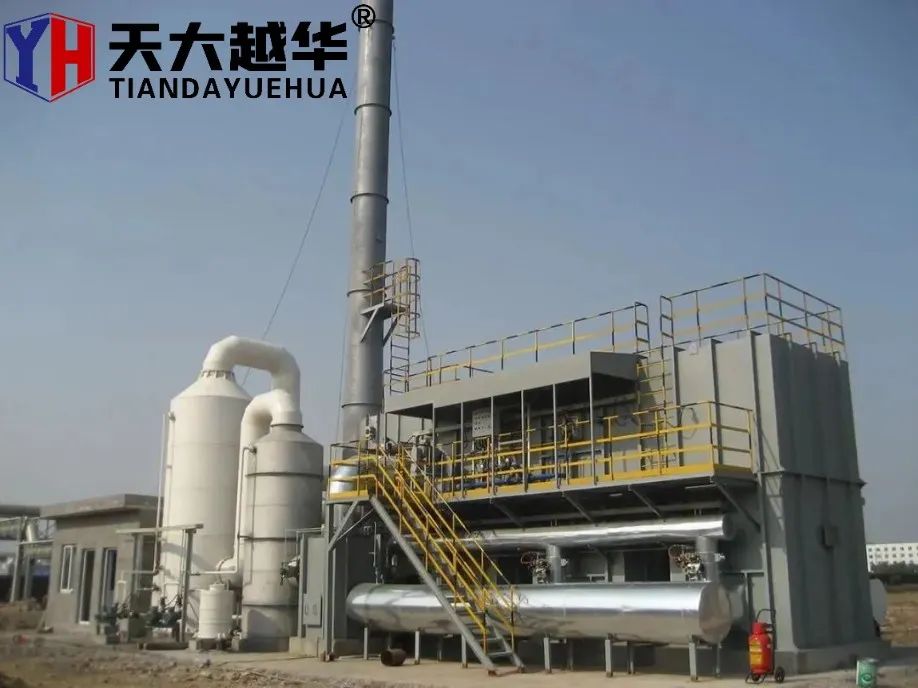Preserving Purity: How the Combustion Process in an Oxidizer Incinerator RTO Minimizes Hazardous By-Products
2024-04-08
In the realm of industrial pollution control, Oxidizer Incinerator Regenerative Thermal Oxidizers (RTOs) stand as guardians against harmful emissions, championing the cause of environmental purity. Central to their mission is the combustion process, a meticulously orchestrated dance of heat and chemistry designed to neutralize volatile organic compounds (VOCs) and hazardous air pollutants (HAPs). In this blog, we'll delve into how the combustion process in an Oxidizer Incinerator RTO operates to minimize the formation of hazardous by-products, ensuring a cleaner and safer environment.
Understanding the Combustion Process
The combustion process in an Oxidizer Incinerator RTO occurs within a high-temperature combustion chamber, where VOCs and HAPs present in industrial exhaust gases are subjected to intense heat (typically ranging from 1400°F to 1800°F or 760°C to 980°C) in the presence of excess oxygen. This environment promotes oxidation reactions, breaking down complex organic compounds into simpler, less harmful molecules such as carbon dioxide (CO2) and water vapor (H2O). The combustion process is carefully controlled to ensure thorough oxidation of pollutants while minimizing the formation of hazardous by-products.
Factors Minimizing By-Product Formation
Several factors contribute to the minimization of hazardous by-products during the combustion process in Oxidizer Incinerator RTOs:
1. High Combustion Temperatures: Operating at elevated temperatures facilitates complete oxidation of VOCs and HAPs, ensuring that organic compounds are fully converted into benign by-products such as CO2 and H2O. High combustion temperatures promote efficient combustion kinetics, minimizing the formation of incomplete combustion by-products such as carbon monoxide (CO) and nitrogen oxides (NOx).
2. Excess Oxygen Levels: Maintaining excess oxygen levels within the combustion chamber ensures sufficient oxygen availability for combustion reactions to proceed to completion. This prevents the formation of carbonaceous residues and incomplete combustion by-products, such as soot and unburned hydrocarbons, which can contribute to air pollution and pose health risks.
3. Optimized Residence Time: Providing adequate residence time within the combustion chamber allows pollutants to undergo thorough oxidation and ensures that combustion reactions proceed to completion. This minimizes the formation of intermediate by-products and enhances the destruction efficiency of VOCs and HAPs, leading to lower emissions of hazardous substances.
4. Stoichiometric Control: Achieving the ideal stoichiometric ratio of fuel to oxygen is critical for optimizing combustion efficiency and minimizing the formation of hazardous by-products. Oxidizer Incinerator RTOs utilize advanced control systems to precisely regulate the flow rates of fuel and air, ensuring that combustion occurs under optimal conditions for pollutant destruction.
Benefits of By-Product Minimization
Minimizing the formation of hazardous by-products during the combustion process in Oxidizer Incinerator RTOs offers several key benefits:
- Environmental Protection: By preventing the release of hazardous by-products into the atmosphere, Oxidizer Incinerator RTOs safeguard air quality and protect ecosystems from the harmful effects of pollution.
- Human Health: Reductions in hazardous by-products contribute to improved air quality, reducing the risk of respiratory ailments, cardiovascular diseases, and other health impacts associated with exposure to air pollution.
- Regulatory Compliance: By minimizing emissions of hazardous substances, Oxidizer Incinerator RTOs help industrial facilities achieve compliance with stringent environmental regulations and emission standards, avoiding fines and penalties for non-compliance.
Conclusion
In conclusion, the combustion process in an Oxidizer Incinerator RTO is a finely tuned mechanism for minimizing the formation of hazardous by-products and ensuring environmental purity. By operating at high temperatures, maintaining excess oxygen levels, optimizing residence time, and controlling stoichiometry, RTOs facilitate the complete oxidation of volatile organic compounds (VOCs) and hazardous air pollutants (HAPs), leading to the formation of benign by-products such as carbon dioxide (CO2) and water vapor (H2O). Through meticulous control and precision engineering, Oxidizer Incinerator RTOs exemplify the commitment to pollution control and environmental stewardship, preserving the integrity of our air and safeguarding the health of present and future generations.



